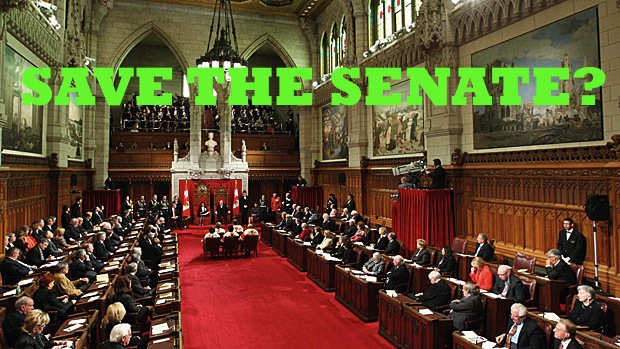Is the Senate of Canada broken? And if so, is it worth saving? Here are the positions held by Canada’s federal political parties:
1) Abolish the Senate
The New Democratic Party of Canada, the official opposition since 2011, are staunchly in favour of entirely abolishing the Senate of Canada. “Unelected party hacks have no place writing or rewriting the laws of this country. It’s as simple as that,” NDP leader Thomas Mulcair told reporters in August 2013. Saskatchewan’s conservative premier Brad Wall is also in favour of abolishing the Senate.
It is unclear how the NDP would actually implement the abolition of the Senate if the party ever formed government in Ottawa.
2) Elect the Senate
Elected, equal and effective was the Triple-E proposal supported by the now-defunct Reform Party of Canada. Alberta is the only province to have ever held Senate nominee elections (in 1989, 1998, 2004 and 2012). Typically coinciding with provincial or municipal elections, the Senate elections are a sideshow that have received little attention from the media or the general public. The Senate nominee candidates have run as provincial party candidates. Five elected nominees have been appointed to the Senate by prime ministers since 1990.
Prime Minister Stephen Harper‘s Conservative Party of Canada proposed legislation that could shorten terms in office and move towards provincially elected senators in 2006. The legislation was stalled and the Conservative have since asked the Supreme Court of Canada for its opinion on the Senate reform proposals.
3) Panel-appointed independent Senate
Liberal Party of Canada leader Justin Trudeau announced this week that he had removed all 32 Liberal senators from the party’s national caucus. The justification for doing so was to make the Senate less partisan and to eliminate patronage. Mr. Trudeau suggested that a non-partisan panel select new appointees to the Senate.
4) Proportional representation Senate
The Green Party of Canada passed a motion at their 2010 convention which supports the election of senators through a system that ensures proportional representation. While the policy is not specific, it could be referring to the electoral system used to elected members to the Australian Senate.
5) The status-quo Senate
In practice, the Governor General makes appointments to the Senate at the recommendation of the Prime Minister. Senators must be citizens of Canada and at least thirty years of age to be eligible for appointment to the Senate. They must maintain residency in the provinces or territories for which they are appointed and can only serve until the age of seventy-five.
While prominent Canadians have been appointed to the Senate, they overshadowed by the long-list of party loyalists who have been rewarded with appointments by various Conservative and Liberal prime ministers. Mr. Harper has appointed 51 of the 96 current senators since the Conservatives formed government in 2006 (there are currently 9 vacancies in the Senate).

